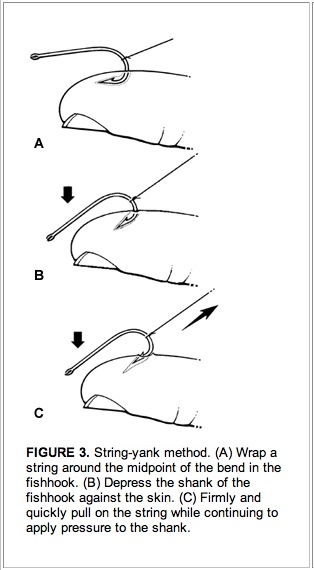Fishing is a favorite hobby or sport in the summer for people of all ages. Whether fishing at one of several national parks in the area such William B. Umstead or Eno River State Park, novice fishermen and even experienced anglers may encounter getting hooked, and not necessarily by a fish. Getting stuck with a fishing hook most commonly occurs in the hand and happens more often than you may think and could lead to a potentially dangerous situation.
Should I Remove a Fish Hook Myself?
As a common rule, the Raleigh Orthopaedic Clinic Hand Wrist specialists advise that you do not try to remove hooks from a hand. Hooks come in a variety of shapes, sizes, and some have barbs that can make a simple-looking injury much more troublesome. Hands are filled with vessels, small nerves, and tendons. Deep and penetrating hook injuries can very easily involve many of these structures, so you could potentially make the situation much worse. For hooks that are deeply embedded in the hand, follow these simple rules and seek medical attention:
- Remain calm and/or calm the person who is hooked.
- Immediately stabilize the hand and remove it from the situation. Often fish can be attached to lures, there may be tension on the fishing line, or there are multiple hooks in play that can complicate the issue.
- If possible, cut the hook from the fishing lure/line while leaving as much of the hook exposed as possible in the skin.
- For deeply embedded hooks, it’s best to simply cover the remaining hook in the hand, and seek medical attention.
For smaller-sized fishing hooks or for injures where the hook appears to be very superficially embedded, there is a proven technique for self-removal. The most common technique is the the “string-yank” technique:
- Loop a piece of fishing line around the belly of the hook. Then, gently press the shank of the hook against the skin.
- Wrap the other end of the string around the index finger of your other hand, and use your thumb to hold the loose end of the string tight.
- Once you’ve done that, you can move your index finger close to the hook to make a little slack in the line. Pull on the string (be sure to stay in line with the hook) to help force the hook out.

Watch for Infection
After you remove the fish hook, it is important to monitor the site for infection. Should you have any of the following symptoms, see a medical professional as soon as possible to avoid further infection:
- Redness around the wound/hook site.
- Persistent drainage from the wound that is discolored.
- Fever or nausea.
- An increase in severe and burning pain at the wound site.
